Didi EarthTree, Marine Biology at CMIL, Week 3
Hello, my name is Didi and my internship is at the CMIL Marine Biology lab. I am working with lobsters and microorganisms. This week I learned more about how to handle lobsters, and how to dissect urchins.
This week started off with cleaning the urchin and lobster tanks. While cleaning the urchin tanks, I found two recently dead urchins. Since they were going to be disposed of anyway, I was allowed to dissect them. To dissect an urchin, first, you remove their mouth which is also called Aristotle’s lantern. Then, looking inside you see where the gonads are ( the orange part of them). Next, you cut in between them down the center. Finally scooping out the insides of them, you can weigh their insides and see how healthy they are. If they are bright orange, the urchin was healthy and if it is a more grey color, this means it was unhealthy. The amount of gonads inside indicates how well fed it was. These urchins have a large number of gonads each, which means they were fed well. After dissecting and disposing of the urchins ( which I named Bob and Sophia) I started cleaning the lobster tanks.
I was almost done with removing the debris of their food when I noticed the last two tanks had orange flakes in them. This could be brine shrimp, or it could be eggs, so I went and got someone to take a closer look. Upon picking the two of them up, you could immediately see that they had masses of eggs on them. They had been separate from the males; however, female lobsters can impregnate themselves. After the male has put his sperm just above her back two legs on her stomach, she will then use her back legs to scrape it onto her egg pouch and impregnate herself. She can have the sperm on her for quite a while before she does this, so there is really no telling who the father was.
Later in the week, I helped Vanessa tag lobsters with zip ties, and break off one back leg. This was done to five or six of them so we can test the DNA and track them.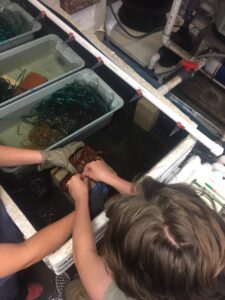 The first time I broke it off, it was quite jarring and he dropped it right after. Dropping a leg is a defense mechanism used by lobsters similar to how some amphibians can drop their tails if a predator is eating them. It is a way to sacrifice one leg and save the rest of themselves. Handling lobsters can be difficult, but after handling a few of them I learned that pinning their tail to their stomach, and the antenna apart works best.
The first time I broke it off, it was quite jarring and he dropped it right after. Dropping a leg is a defense mechanism used by lobsters similar to how some amphibians can drop their tails if a predator is eating them. It is a way to sacrifice one leg and save the rest of themselves. Handling lobsters can be difficult, but after handling a few of them I learned that pinning their tail to their stomach, and the antenna apart works best.
At the end of the week, I helped collect the Asian muscles that I put in the water the week before. This time we went later in the day, so the tide was higher, meaning that we had to swim in. While walking into the water, I had to shuffle my feet in case of stingrays. I did not think that there would be any, but on my way in I saw one the size of a pancake swimming by. They are kind of cute once you get over the fact that they can cause searing pain if you touch them.
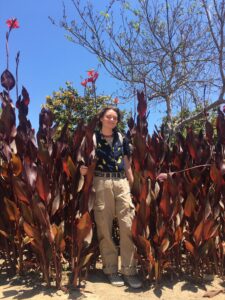 In our free time, Lulu and I went to Little Italy and the farmer’s market. We each got Indian food and paninis then listened to the live music. Afterward, we went to a waterpark and took pictures in front of plants that looked like seaweed, and a glass structure that looked like snakes.
In our free time, Lulu and I went to Little Italy and the farmer’s market. We each got Indian food and paninis then listened to the live music. Afterward, we went to a waterpark and took pictures in front of plants that looked like seaweed, and a glass structure that looked like snakes.
This week was so much fun, and I learned more about urchins and how they function for our experiments. 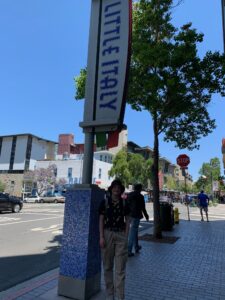
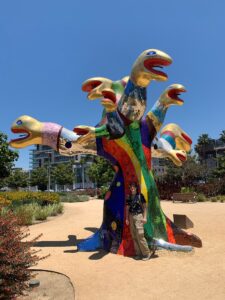

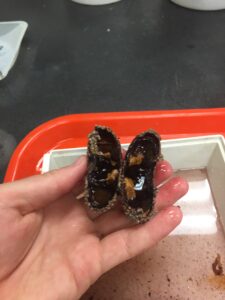
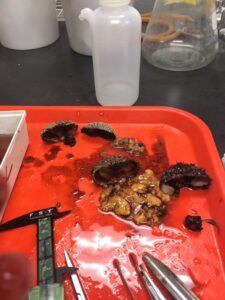
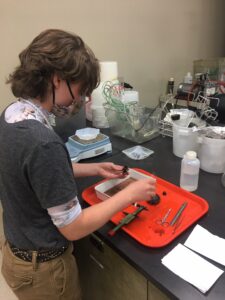
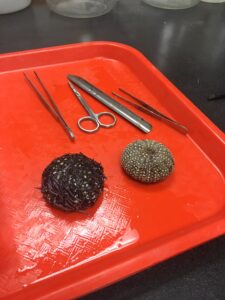
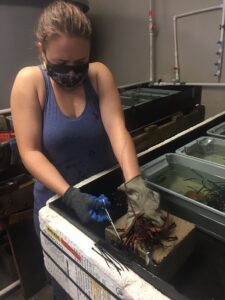
There are no comments published yet.